Can electrical stimulation improve your gym workout?
- Published
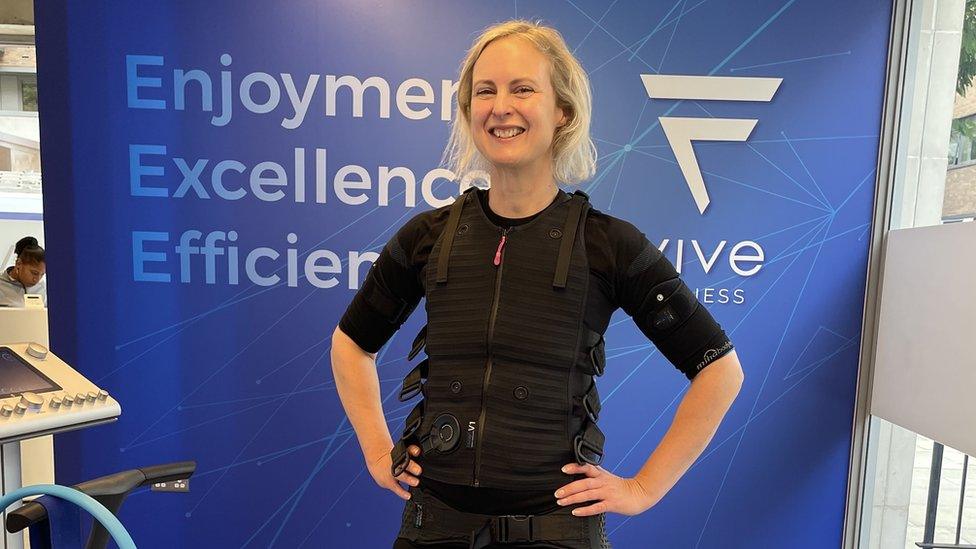
Lebby Eyres says whole-body electrical muscle stimulation suits, such as the one she is wearing here, work for her
The first time that long-distance rower Lebby Eyres tried exercising in the gym while wearing a whole-body electrical muscle stimulation (EMS) suit, she says "it felt strange".
"I got into the suit, and then trainers sprayed me with water, and strapped these things around my arms, legs and glutes (buttocks)," says the 51-year-old. "I thought to myself, 'am I really going to be able to exercise wearing these?'
"Then the [electrical] stimulus of the machine gave me the most unusual sensations."
When she woke up the following morning at home in London, Mrs Eyres says her muscles had the level of soreness that she typically got from working out for a few hours, yet she had only exercised for 20 minutes.
EMS has long been used by doctors to help improve the mobility of people with a number of health conditions, such as patients recovering from a stroke, or people with multiple sclerosis., external
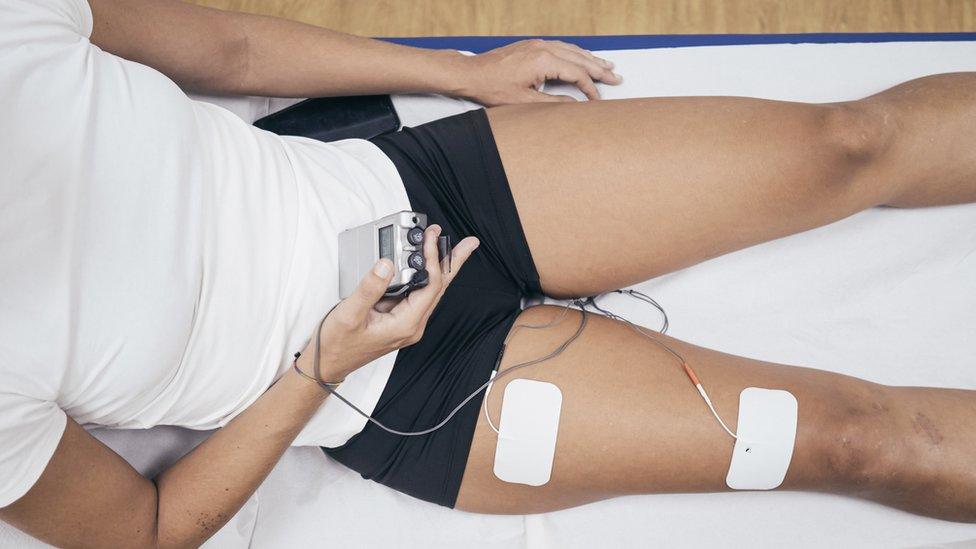
EMS systems have long been used for pain relief or to boost mobility
Using low currents of electricity to stimulate muscles and nerves, it is also often used by mothers during childbirth, in the form of a piece of equipment called a tens machine, to try to alleviate the pain., external This sees the woman fix sticky pads to her lower back, and then use a hand-held controller to adjust the level of electrical charge that the pads emit.
While those health usages typically focus on one area of the body, whole-body EMS suits (which typically comprise a short-sleeved top and shorts) are now a fast-growing trend in the fitness and gym world.
The idea is that the electrical stimulation of your muscles speeds up the effect of exercising and strengthening. So you can do a 20-minute workout that is equivalent to one lasting 90 minutes if you weren't wearing the body suit.
While this might sound fanciful to many of us, the number of gyms offering EMS has been increasing quickly. One such provider, US chain Iron BodyFit, is continuing to expand in Europe after opening more than 100 studios in France over the past five years.
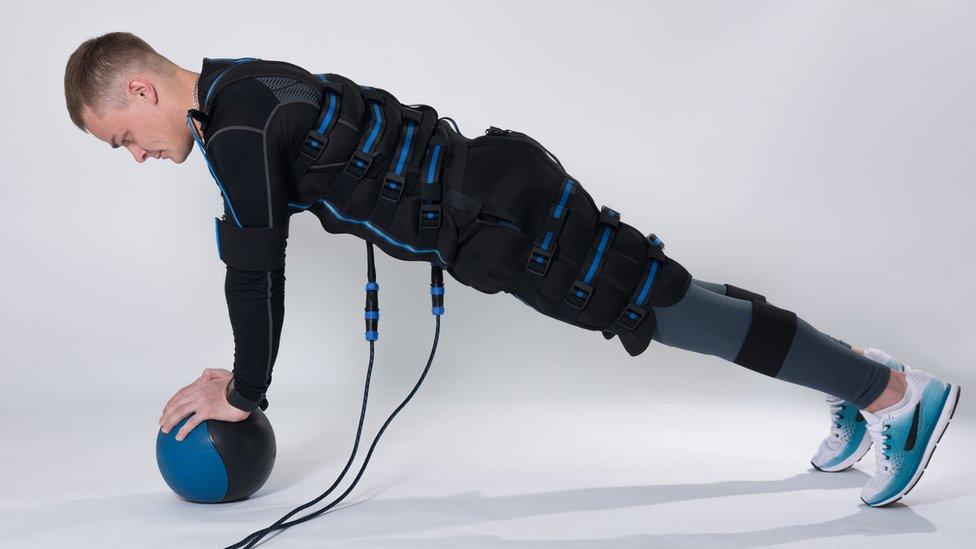
A growing number of gyms are allowing members to try EMS suits
It launched its first UK venue in London last year, and plans a dozen more over the next 12 months. Other chains that focus on EMS, and are expanding in the UK, include Feel Electric and Surge.
Such growth is helping to drive the overall global market for EMS, which one report says will grow by 51% from $122m in 2020 to $184m in 2030., external
But does EMS actually work in the fitness sphere? Does it really improve the efficiency of your workout and give you bigger muscles for less effort? And more importantly - is it always safe?
"We are bypassing the brain," says Phil Horton, UK director for German firm Miha Bodytec, one of the largest manufacturers of EMS body suits. "We can trigger the muscle in a smarter and more efficient way compared to the way the brain would tell the muscle to move."
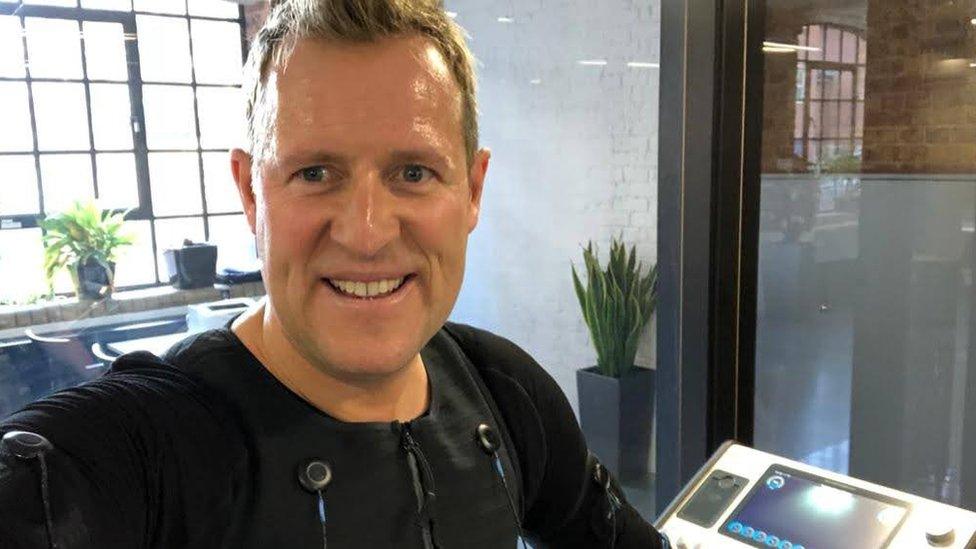
Phil Horton says EMS suits turbo-charge gym workouts
He adds that the small electrical charge more easily reaches deep muscle tissue. Water is often sprayed on the suit to boost conductivity.
The problem for the EMS fitness sector is that studies into whether it works are very mixed, and even those that are positive use a lot of words like "might", "could", or "may".
One report back in 2011 said that the use of EMS "has been acknowledged" to help lead to "significant improvements in strength", external. Yet it then immediately added that such changes are "still ambiguous", "poorly understood" and "require more study".
An article earlier this year concluded that the jury was still very much out., external


New Tech Economy is a series exploring how technological innovation is set to shape the new emerging economic landscape.

Meanwhile, the US Food & Drug Administration, which regulates EMS machines, says that when used for fitness they "may be able to temporarily strengthen, tone or firm a muscle", but only if accompanied by exercise and dieting., external
It also cautions against the use of unregulated devices, as these may cause "shocks, burns, bruising, skin irritation, and pain".
Nicola Maffiuletti, a sports science expert at Swiss orthopaedic clinic Schulthess Klinik, has also long been critical of whole-body EMS.
"In particular, whole-body electrical stimulation is extremely difficult to dose properly," he says, adding that under-dosage means no effect, while over-dosage could cause muscle damage.
"So if we objectively look at the harmful versus beneficial effects of whole-body electrical stimulation, there are no strong arguments in favour of its use."
Veteran US weightlifter Robert Herbst's opposition to whole-body EMS is more straightforward. The 64-year-old thinks it simply does not work.
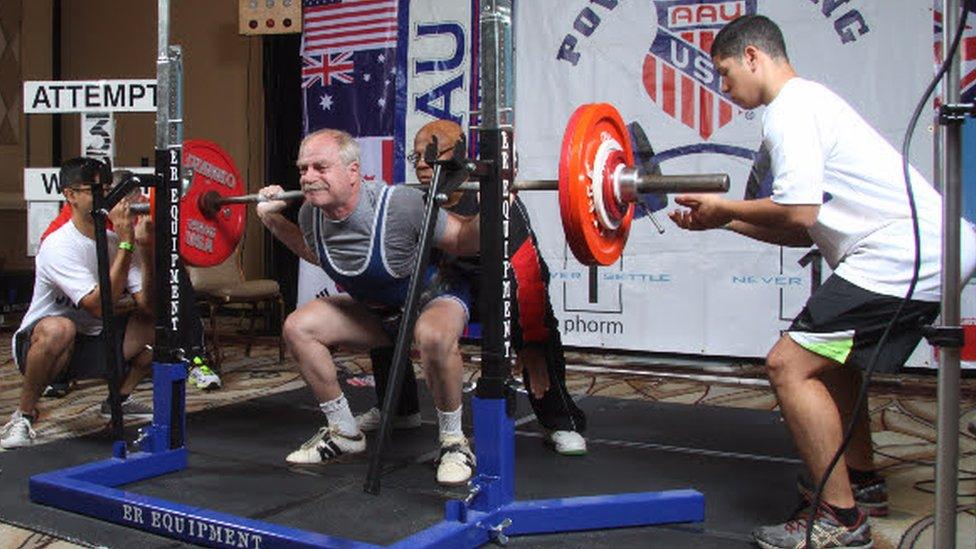
Veteran US weightlifter Robert Herbst has no truck with EMS
"The stress put on your muscles by EMS is insufficient to create the micro-trauma weightlifting creates," says Mr Herbst, who has won several world and American championships, and still competes.
Yet US exercise physiologist Tom Holland says full-body EMS is useful because it can encourage people to do more exercise. "Squats, lunges, crunches, bicep curls and other traditional exercises are more fun when done through EMS," he says.
However, he says it is often not cheap, with prices in the US as high as $125 (£110), and those in the UK reaching as much as £130 per 20-minute session.

Lebby Eyres, far right, and three friends rowed across the Atlantic last year
Back in London, Ms Eyres used whole-body EMS to help her train for rowing across the Atlantic in the 2021 Talisker Whisky Atlantic Challenge. She successfully completed the event, rowing in a boat with three friends.
She says that thanks in part to the use of EMS "my abs are much better now than when I was 21".
"Everyone complimented me on my much stronger and toned figure."